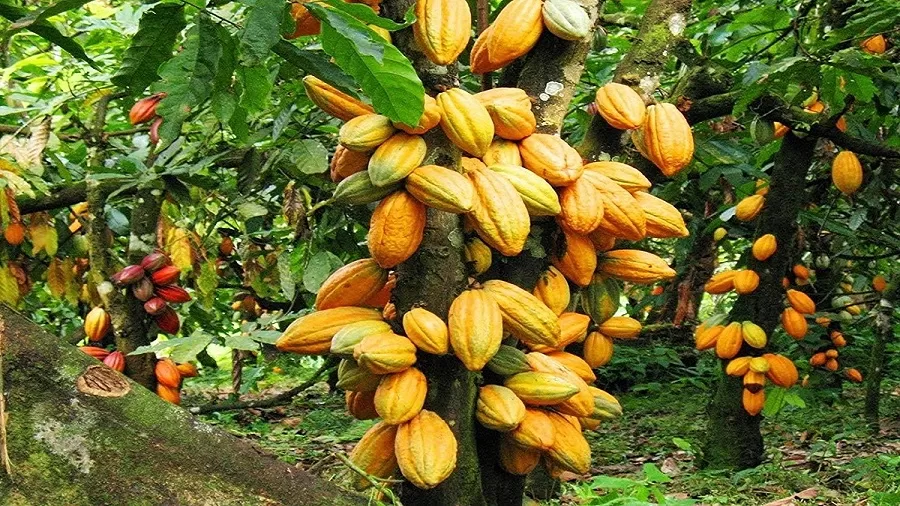Agriculture
Pollination Crisis in Cocoa Farming: What It Means for the Future of Chocolate

- Pollination turns out to be the main limiting factor for the yield of cocoa, as hand-pollinated trees give about 20% more pods than those that are naturally pollinated, thus underscoring the importance of better pollination strategy development.
- The climate and soil conditions control cocoa yields. Excessive heat cuts down on production, whereas richer organic matter and shade management sites yield more cocoas, thus stressing the importance of sustainable farming practices.
The most recently published Communications Earth & Environment research study has brought to public attention some of the leading environmental variables that affect cocoa (Theobroma cacao L.) production. More specifically, an attempt to evaluate some of the challenges posed by poor insect pollination, increasing temperature, and conditions of the field soil has been discussed. These are inputs that mainly contribute to the worldwide yields of cocoa. Cocoa is essential for the multi-billion-dollar chocolate industry, and therefore it is vital to study these challenges for long-term sustainability.
Cocoa Farming: An Economic Lifeline
There are around 4 to 5 million farmers who are directly dependent on cocoa, most of whom are from tropical areas. At the same time, the world market for unprocessed cocoa beans is expected to reach $16 billion by 2025. Chocolate, on the other hand, commands an astonishing annual revenue of about $100 billion. All these imply the urgent need for sustainable cocoa farming systems.
However, increasing challenges are on cocoa farmers, such as deforestation, loss of biodiversity, and climate change that threatens the farmers’ livelihood. Pollination is one of the most important parts of cocoa production since it directly influences fruit set and output. Cocoa, like many other crops, is regularly pollinated by arthropods, specifically midges of the Ceratopogonidae family. To ensure the sustainability and productivity of cocoa production, it is vital to create favourable conditions for these pollinators.
Analysis of Critical Factors That Affect Cocoa Yields
The examination carried out in Indonesia, Brazil, and countries that together make up almost 33% of global cocoa production has very important relationships between natural pollination, environmental conditions, and cocoa yields. Pollination treatments (from 0% to 100%) were carried out in controlled experiments with hand pollination at different sites to measure mature cocoa pod production per tree.
With generalised linear models (GLM), this study analysed cocoa yield concerning useful predictor variables: the rates of natural pollination, climatic variation, and soil conditions.
Cocoa Yield and the Importance of Pollination Perhaps
The most significant finding was that trees that are completely dependent on natural pollination produced 20% fewer pods than hand-pollinated trees. Many flowers on cocoa trees do not receive enough pollen naturally, resulting in lower overall yield. Natural pollination rates varied significantly among the regions:
- Brazil had the lowest natural pollination rate at 12%.
- Indonesia followed closely with 11%.
- Ghana recorded the highest rate at 27%.
Such numbers generally mean that certain parts of the regions are under more significant challenges in managing pollinator populations, so there should be ways by which natural pollination can be encouraged.
The Influence of Climate and Soil Conditions On Cocoa Farming
This study also indicated that climate and soil conditions would affect cocoa production. Whereas cooler conditions during the warmest months correlated with a 22% to 31% increase in pod production, such higher temperatures became a concern because the effect is believed to be brought about by damaging flower health and pollinator activity. With climate change caused by temperature changes, adaptive solutions for managing heat stress will be critical for maintaining cocoa harvests.
The soil on such farms was another significant, as larger cocoa trees produced 9% to 19% more pods than ones with lower organic matter. Fertilisation is used to boost soil fertility, but the study found that pollination had a greater impact on productivity than nutrient availability alone. This highlights the importance of boosting pollinator numbers rather than relying on soil modifications.
Sustainable Solutions for Farmers Growing Cocoa
As a result, the findings give evidence for cocoa farmers, industry stakeholders, and politicians to act upon. Increased pollination services have been discovered to be associated with improved cocoa productivity, whereby numerous sustainable approaches are used:
- Protect pollinator habitats with diverse plant species.
- Encourage agroforestry for shaded environments that can support pollinators.
- Preserve leaf litter to provide microhabitats for midges.
- Manage shade levels by preventing excess heat stress on cocoa flowers.
Farmers marry these practices and enjoy greater pollination rates and higher yields, thereby improving climate resilience.
Cocoa Production in the Future
The study concluded that pollination is an important limiting factor in cocoa production, alongside or even more than soil nutrients or tree attributes. Hence, faced with climate change and habitat destruction, any future efforts to sustain a stable and equitable cocoa industry would require investments in pollination-friendly agricultural practices.
On either side of this work could be researched in the development of climate-resilient agricultural systems where enhancement of pollination is coupled with adaptation strategies. This is an economic imperative because there are millions of livelihoods dependent on cocoa farming; thus, environmental sustainability would have to follow.


















































